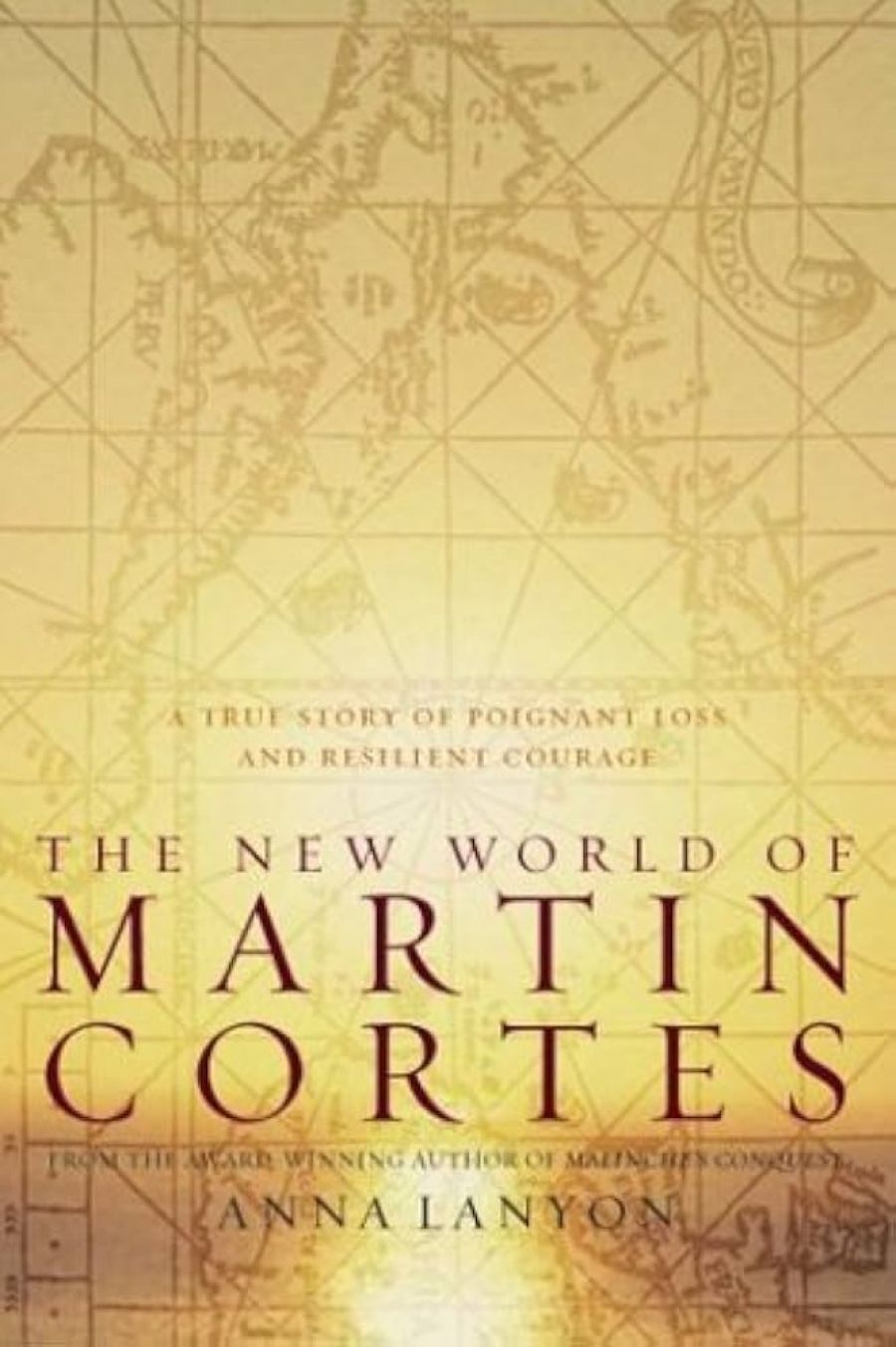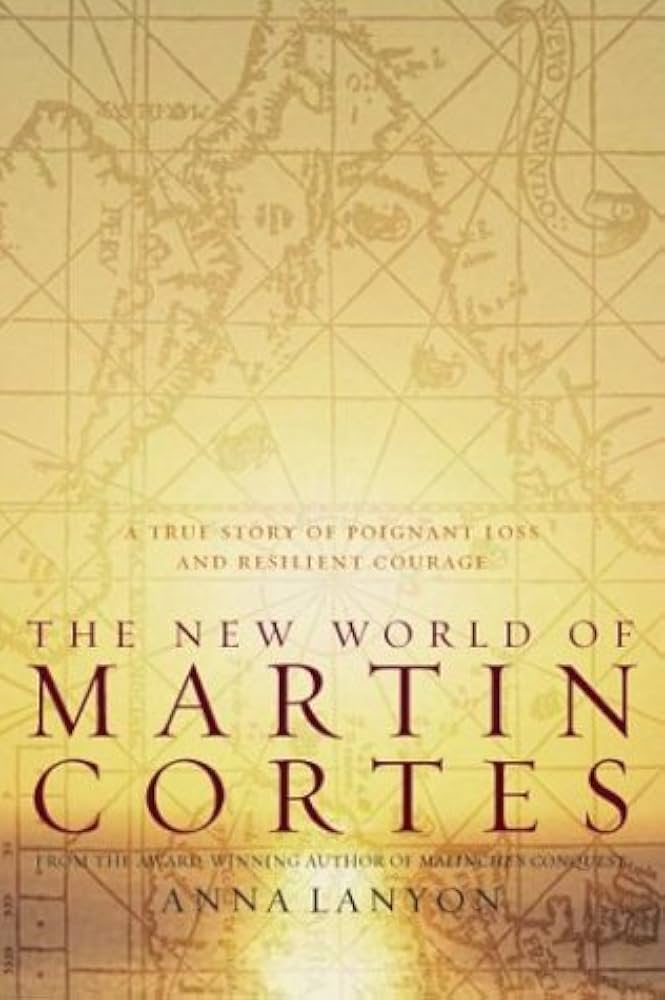
- Free Article: No
- Contents Category: Biography
- Review Article: Yes
- Article Title: A Brace of Martins
- Online Only: No
- Custom Highlight Text:
In 1519 the Spanish conquistador Hernan Cortés marched into Tenochtitlán (Mexico City), heart of the Aztec Empire. Thus began the often tragic history of European colonialism in the Americas. Anna Lanyon’s previous book, Malinche’s Conquest (1999), retraced and recovered the extraordinary life of Cortés’s translator and lover, the native American woman Malinche. The present book does the same for their child, Martín Cortés.
- Book 1 Title: The New World of Martín Cortés
- Book 1 Biblio: Allen & Unwin, $24.95 pb, 272 pp
- Book 1 Cover Small (400 x 600):

- Book 1 Cover (800 x 1200):

In English literature, the conquistador is memorialised by Keats, who likens his own ecstatic discovery of Homer in Chapman’s edition to the epiphany of ‘stout Cortez’, who stared at the Pacific Ocean, silent, upon a peak in Darien. But as Greg Dening has observed, the explorer that Keats imagined to be Hernan Cortés was in fact Vasco Nuñez de Balboa; the ocean he surveyed would not be named the Pacific for another seven years; he was near, but not quite in, Darien.
All these confusions – identity, naming, place and time – attend the story of Martín Cortés. From scant references and conflicting accounts and records, Lanyon constructs a speculative biography of the man who would become known as the first mestizo, a child born of mixed European and Amerindian descent; a new man for a New World.
Born in Tenochtitlan in 1522, Martín was the illegitimate first-born son of Hernan Cortés and Malinche. His parents separated, and he was fostered with a Spanish family in Tenochtitlán. In 1528 his father took him to Spain, where Martin was made a Knight of St James (Santiago) and was deposited at the royal Castilian court. Martín spent the next thirty years serving the interests of imperial Spain, fighting in Lombardy, Germany, Piedmont and at the battle of St Quentin.
In the meantime, his father married into the Spanish aristocracy and returned to Mexico, where another (legitimate) son was born, also named Martín. Why did Hernan Cortés choose the same name for his two sons, born ten years apart? Whatever the reasons, the result was a mire of confusion, as the two were henceforth either confused or not distinguished in records and historical accounts. Which Martín Cortés went to England for the wedding of Mary Tudor and Philip of Spain? Which one joined his father and Charles II in the abortive attack on Algiers? All this has Lanyon thinking of the mistaken identity and misplaced twins of Shakespearean romance.
When Hernan Cortés died in 1547, he left his three sons a rich inheritance, but made the younger Martín head of the family and executor of the estate. Lanyon details the subsequent protracted legal dispute between the brothers Cortés, as the elder Martín sued the younger for his rights and annuities. Presumably, there was some reconciliation (though Lanyon is rather silent on this), for in 1562 Malinche’s son joined his brothers on a voyage to Mexico, there to bury the bones of their father.
The return of the native was his undoing. The younger Martín, a somewhat brash and conceited man, it seems, became the centre of seditious rumours. All three brothers were arrested and interrogated. In the manner that would become infamous in the Spanish Inquisition, Malinche’s son was subject to the most appalling tortures to garner a confession. These proceedings Lanyon recounts in meticulous detail: a sixteenth-century scribe recorded every twist of the garrotte, every turn of the rack, every pint of water poured down the victim’s throat. Like all great heroes, Martín Cortés remained stoic and steadfast: ‘I have spoken the truth; I have nothing more to say.’ He was eventually released, but exiled from Mexico, returning to once again serve his king loyally. Somewhat ironically, the child of the New World died in Spain, fighting the remnants of the Moors at Granada.
Those who have read Lanyon’s book on Malinche will be familiar with her supple style in this genre. She leads us through contemporary chronicles and epistolary glimpses; she takes us to dusty archives in Spain, and dilapidated churches and haciendas in Mexico, all the while gathering the threadbare traces of Martín’s life. Ultimately, the biographical picture is unsatisfying, with too few details and events to fill in the sketch of character. To borrow a familiar biographical metaphor, there is not enough weft to bind the warp.
In many ways, the real attraction of this book falls on the narrative of Lanyon’s research: her journeys back and forth across Spain and Mexico; her descriptions of the archives; and her conversations with informants, reliable or otherwise. Where gaps appear – and there are many – the author tries to imagine the details. She brings in interesting parallel material and events, but there are silly apologies for things we don’t know, such as the name of a midwife, and there is a bit too much hypothetical modality, where Lanyon imagines something must have, might have or would have happened.
Lanyon makes profitable use of many sources and commentaries. Among these it’s good to see Fernand Braudel, but does he always need introduction as ‘the French historian’ (twice), ‘the great French historian’ (twice) and, finally, the ‘incomparable Fernand Braudel’? Her habit of gazing at portraits to understand their subject is engaging, but echoes Manning Clark’s rather dubious method of historical enquiry. It also recalls Josephine Tey’s Daughter of Time (1951), where a portrait of Richard III inspires a similar (but more provocative and rewarding) historical investigation.
There is insightful commentary on the rich Mexican heritage of Martín Cortés in history and literature, where he appears as both a noble and tragic figure. But the issue that haunts the book is miscegenation: ‘Is it possible to speak of racial essentialism?’ asks Lanyon at one point. This fundamental question needs more thoroughgoing analysis.

Comments powered by CComment